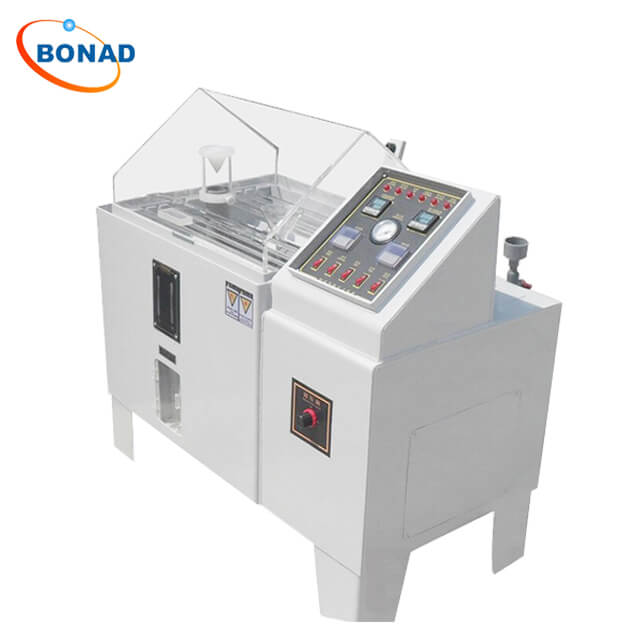Corrosion testing is a crucial process in quality assurance labs within the metal industry, serving as an essential part of quality control. These tests are typically performed in salt spray test chambers, which accommodate various tests for black metals and alloys. Additionally, the paint and coating industry also employs corrosion testing to ensure coating quality, thereby extending the lifespan of black metals.
Although corrosion might often be overlooked, its impact on black metals is significant. In salt-rich environments, these materials occasionally react with iron, leading to oxidation reactions that transform ferrous ions into ferric oxide. Over time, these oxidation reactions not only lead to complete product degradation but also create a conducive environment for microbial activity, hastening product damage and failure. To prevent such outcomes, the paint and coating industry continuously works on enhancing the durability of their products and coatings.
Coatings play a vital role in this regard by restricting moisture or contaminants’ entry, effectively preventing corrosion. However, low-quality coatings may fail to offer sufficient protection as they might expose the surface to moisture, ultimately causing oxidation. Therefore, artificial accelerated salt spray testing becomes indispensable to ensure coating quality.
The paint and coating industry is dedicated to improving product and coating quality to address challenges posed by time and external conditions. Through ongoing improvements and rigorous quality control measures, they ensure that products deliver reliable performance and long-term protection, meeting customer needs and promoting sustainable product use.
Operating a Salt Spray Test Chamber
Before conducting salt spray tests, it is essential to understand how salt spray test chambers operate. Here are the key steps for using a salt spray test chamber:
- Understanding the Working Principles: Salt spray test chambers simulate salt conditions to accelerate corrosion testing by creating a salt spray environment.
- Preparing Specimens: Samples can include fasteners or thinly coated metal plates. Non-flat samples like bolts can be suspended using threads and thin rods retained as hangers in the chamber. Flat metal sheets or plates can be easily fixed on the sample carrier area of the chamber.
- Closing the Chamber and Setting Parameters: Ensure that the chamber is securely closed and set relevant parameters such as temperature and test cycle.
- Starting the Test: Initiate salt spray spraying to begin the test while maintaining stable parameters such as temperature and test cycle throughout.
Following these steps ensures correct conduction of salt spray tests, guaranteeing accuracy and reliability.
To ensure accurate and reliable salt spray tests, specific environmental requirements must be met for the salt spray test machine:
- Temperature Range: The ambient temperature should be between 10 to 40°C.
- Relative Humidity: The relative humidity should not exceed 85% RH.
- Absence of Dust and Corrosive Substances: The air should be free from high concentrations of dust and corrosive substances to avoid affecting test results.
- Avoidance of Sunlight and Heat Sources: Direct exposure to sunlight or other heat sources on the test machine should be avoided.
- Absence of Strong Vibrations: Strong vibrations around the test machine should be avoided to maintain a stable test environment.
- Horizontal Placement: The test machine should be placed horizontally and kept stable to ensure accurate testing.
- Avoidance of Strong Airflows: Strong airflow directly blowing onto the test machine should be avoided to prevent interference during testing.
- Absence of Strong Electromagnetic Field Influence: There should be no strong electromagnetic field influence around the test machine to avoid interfering with its normal operation.
Adhering to these environmental requirements ensures stability and accuracy in salt spray tests, resulting in reliable outcomes.
By following these guidelines for operating salt spray test chambers and maintaining appropriate environmental conditions, you can achieve precise corrosion testing results that contribute significantly to quality assurance in both metal industries and paint/coating sectors.



